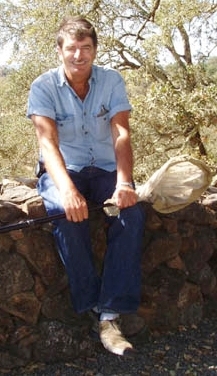
Umm, does California have a state insect? The Monarch? The Western Tiger Swallowtail? The Red Admiral? Wait, isn't this National Pollinator Week? Should I know what the state insect is?
Yes, it is National Pollinator Week. And yes, it's a good time to appreciate the state's designated insect--not just for "Insect of the Week" or "Insect of the Year" but for what it is--a fascinating but quite obscure butterfly that's rarely spotlighted.
That's why we were delighted to see the California dogface butterfly (Zerene eurydice) get some well-deserved attention when Capital Public Radio (CPR) headed off to Auburn last Friday to see the butterfly's major breeding ground. It's at a well hidden, publicly inaccessible site on Placer Land Trust.
The butterfly is also known as the California doghead butterfly and the flying pansy, referring to the male's black and yellow coloring. The female is mostly solid yellow.
Bohart Museum of Entomology associate Greg Kareofelas, a volunteer tour guide for the Placer Land Trust butterfly site for the past three years, is quoted in Bob Moffitt's CPR piece on "Placer County — A Popular Hideout For Rarely Seen Dogface Butterfly,” published last Sunday. Access http://www.capradio.org/articles/2016/06/19/placer-county-popular-hideout-for-rarely-seen-dogface-butterfly/
The butterfly is there because its larval host plant--false indigo (Amorpha californica)--is there. Justin Wages, land manager of the Placer Land Trust, which owns or manages 8,000 acres, says the plant is difficult to grow outside this habitat.
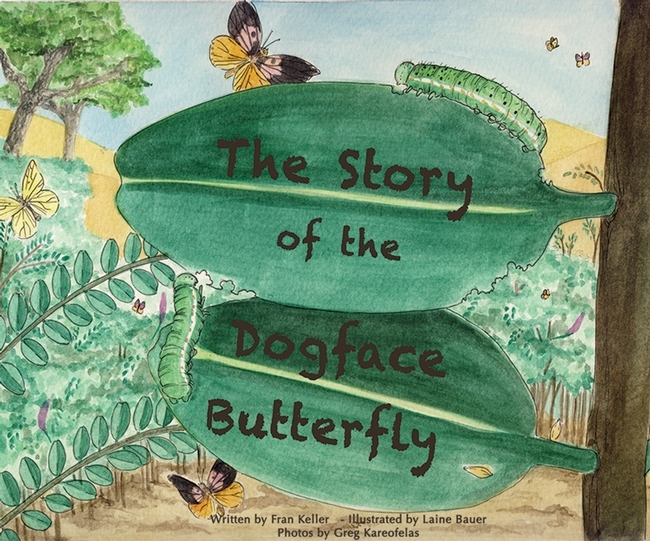
It was also a surprise to see so many dogface butterflies in the space of two hours last Friday. "It's a very good year when I see three dogface butterflies in a single year," Kareofelas said. "They're elusive and hard to see. Last Friday we saw about 10 females and 50 or 75 males."
Kareofelas knows butterflies and he knows the dogface butterfly. To say he's made major contributions to the understanding of the state insect would be an understatement. At his home in Davis, he's reared--and photographed--a dogface butterfly from egg to adult. He's grown the false indigo. His photographs of the female and male appear on a poster that he and entomologist Fran Keller created at the Bohart Museum. His images also appear in a 35-page children's book, "The Story of the Dogface Butterfly," written by Keller with illustrations by then UC Davis student Laine Bauer. Both the poster and the book are available for sale at the Bohart Museum, located in Room 1124 of the Academic Surge Building on the UC Davis campus. Net proceeds benefit the insect museum's education, outreach and research programs.
The book tells the untold story of the California dogface butterfly, and how schoolchildren became involved in convincing the State Legislature to select the colorful butterfly as the state insect. Bauer's illustrations depict the life cycle of this butterfly. As part of their research, Keller, Kareofelas and Bauer visited the Placer Land Trust habitat of the butterfly. And Kareofelas reared that elusive butterfly.
As for the book, “There are also ecology, life cycle, taxonomy and conservation issues presented that are relevant to grades K-6 that can be used in classroom curriculum,” Keller earlier told us. It also includes a glossary.
The butterfly, so named because of a poodle-like silhouette on the wings of the male, was adopted as the official California insect on July 28, 1972, but entomologists had selected it as the state insect as early as 1929. Their choice appears in the California Blue Book, published by the State Legislature in 1929. (Read more on how the butterfly became the state insect under the Ronald Reagan administration.)
Links:
Capital Public Radio Piece on Dogface Butterfly
Pacific Land Trust website
Bohart Museum of Entomology
Attached Images:
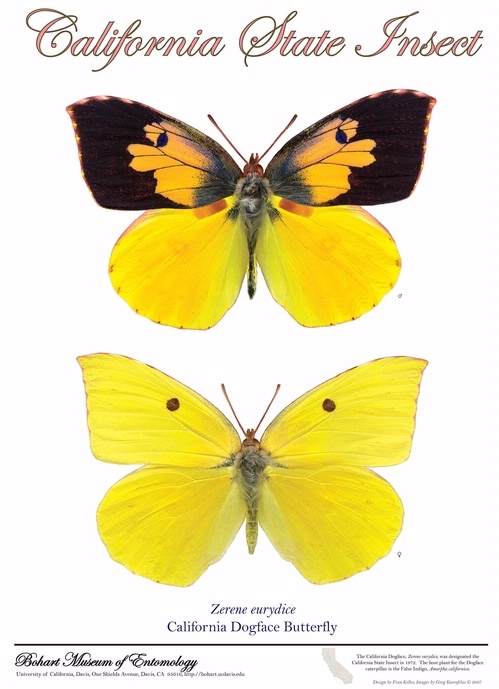
California dogface butterfly poster at the Bohart Museum of Entomology, UC Davis.
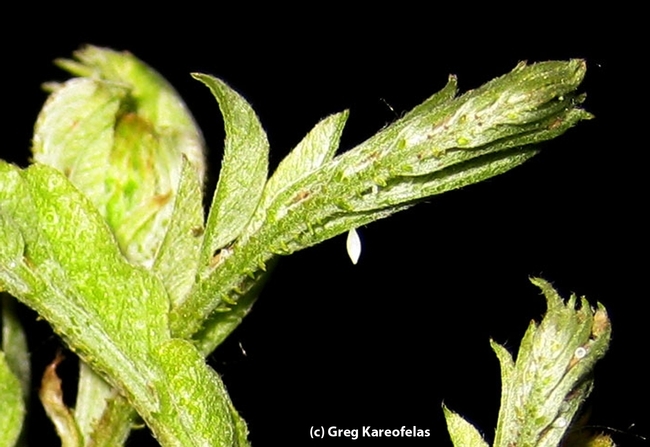
Egg of California dogface butterfly. (Photo by Greg Kareofelas)
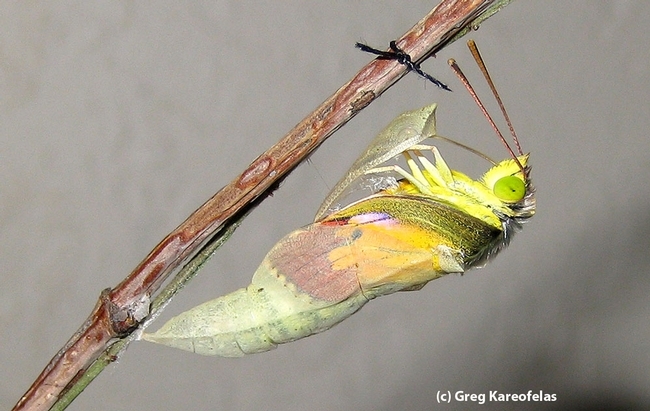
Adult California dogface butterly eclosing from chrysalis. (Photo by Greg Kareofelas)
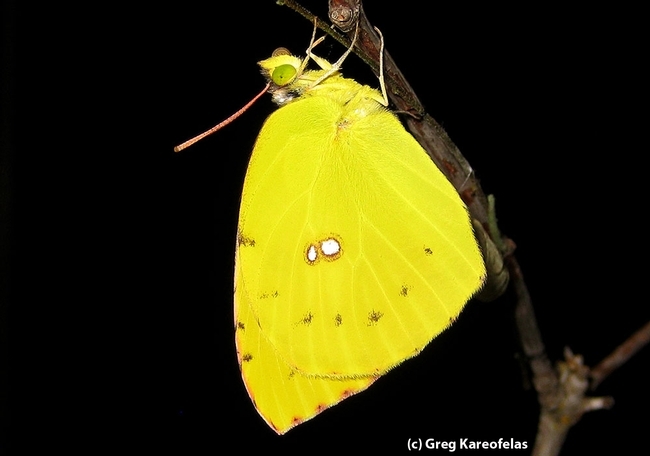
Newly emerged female California dogface butterfly. (Photo by Greg Kareofelas)